Maosong Ran
Plaintext-Free Deep Learning for Privacy-Preserving Medical Image Analysis via Frequency Information Embedding
Mar 25, 2024
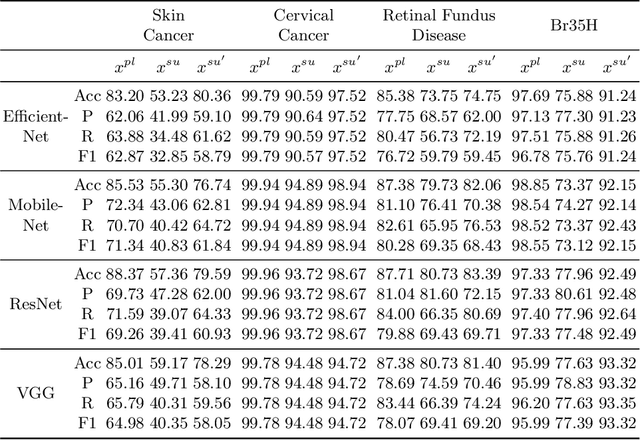
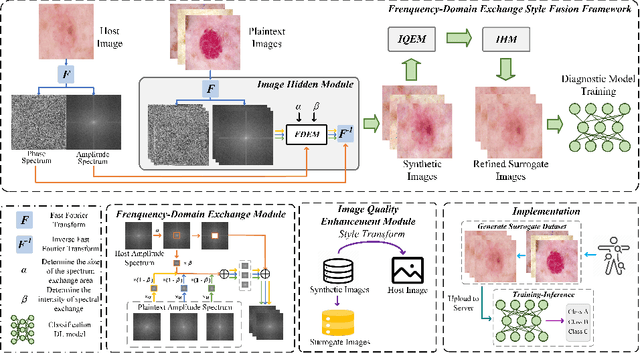

Abstract:In the fast-evolving field of medical image analysis, Deep Learning (DL)-based methods have achieved tremendous success. However, these methods require plaintext data for training and inference stages, raising privacy concerns, especially in the sensitive area of medical data. To tackle these concerns, this paper proposes a novel framework that uses surrogate images for analysis, eliminating the need for plaintext images. This approach is called Frequency-domain Exchange Style Fusion (FESF). The framework includes two main components: Image Hidden Module (IHM) and Image Quality Enhancement Module~(IQEM). The~IHM performs in the frequency domain, blending the features of plaintext medical images into host medical images, and then combines this with IQEM to improve and create surrogate images effectively. During the diagnostic model training process, only surrogate images are used, enabling anonymous analysis without any plaintext data during both training and inference stages. Extensive evaluations demonstrate that our framework effectively preserves the privacy of medical images and maintains diagnostic accuracy of DL models at a relatively high level, proving its effectiveness across various datasets and DL-based models.
Privacy-Preserving Encrypted Low-Dose CT Denoising
Oct 13, 2023


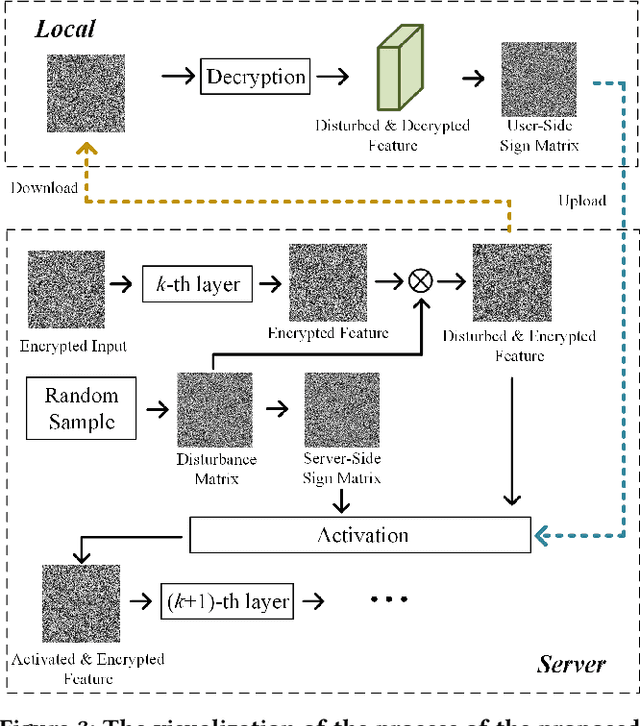
Abstract:Deep learning (DL) has made significant advancements in tomographic imaging, particularly in low-dose computed tomography (LDCT) denoising. A recent trend involves servers training powerful models with large amounts of self-collected private data and providing application programming interfaces (APIs) for users, such as Chat-GPT. To avoid model leakage, users are required to upload their data to the server model, but this way raises public concerns about the potential risk of privacy disclosure, especially for medical data. Hence, to alleviate related concerns, in this paper, we propose to directly denoise LDCT in the encrypted domain to achieve privacy-preserving cloud services without exposing private data to the server. To this end, we employ homomorphic encryption to encrypt private LDCT data, which is then transferred to the server model trained with plaintext LDCT for further denoising. However, since traditional operations, such as convolution and linear transformation, in DL methods cannot be directly used in the encrypted domain, we transform the fundamental mathematic operations in the plaintext domain into the operations in the encrypted domain. In addition, we present two interactive frameworks for linear and nonlinear models in this paper, both of which can achieve lossless operating. In this way, the proposed methods can achieve two merits, the data privacy is well protected and the server model is free from the risk of model leakage. Moreover, we provide theoretical proof to validate the lossless property of our framework. Finally, experiments were conducted to demonstrate that the transferred contents are well protected and cannot be reconstructed. The code will be released once the paper is accepted.
Robust Split Federated Learning for U-shaped Medical Image Networks
Dec 13, 2022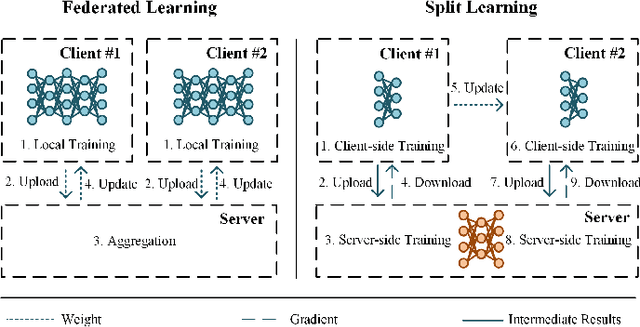

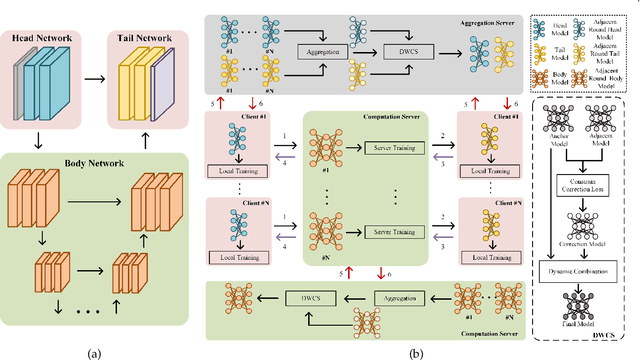

Abstract:U-shaped networks are widely used in various medical image tasks, such as segmentation, restoration and reconstruction, but most of them usually rely on centralized learning and thus ignore privacy issues. To address the privacy concerns, federated learning (FL) and split learning (SL) have attracted increasing attention. However, it is hard for both FL and SL to balance the local computational cost, model privacy and parallel training simultaneously. To achieve this goal, in this paper, we propose Robust Split Federated Learning (RoS-FL) for U-shaped medical image networks, which is a novel hybrid learning paradigm of FL and SL. Previous works cannot preserve the data privacy, including the input, model parameters, label and output simultaneously. To effectively deal with all of them, we design a novel splitting method for U-shaped medical image networks, which splits the network into three parts hosted by different parties. Besides, the distributed learning methods usually suffer from a drift between local and global models caused by data heterogeneity. Based on this consideration, we propose a dynamic weight correction strategy (\textbf{DWCS}) to stabilize the training process and avoid model drift. Specifically, a weight correction loss is designed to quantify the drift between the models from two adjacent communication rounds. By minimizing this loss, a correction model is obtained. Then we treat the weighted sum of correction model and final round models as the result. The effectiveness of the proposed RoS-FL is supported by extensive experimental results on different tasks. Related codes will be released at https://github.com/Zi-YuanYang/RoS-FL.
Denoising of 3-D Magnetic Resonance Images Using a Residual Encoder-Decoder Wasserstein Generative Adversarial Network
Aug 12, 2018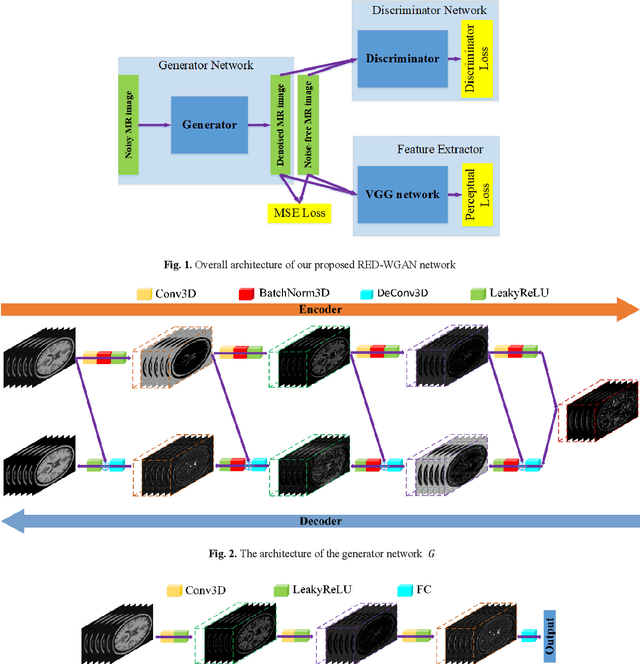
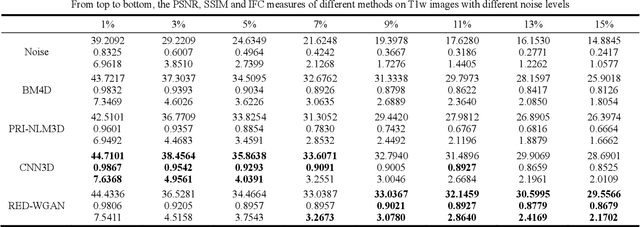
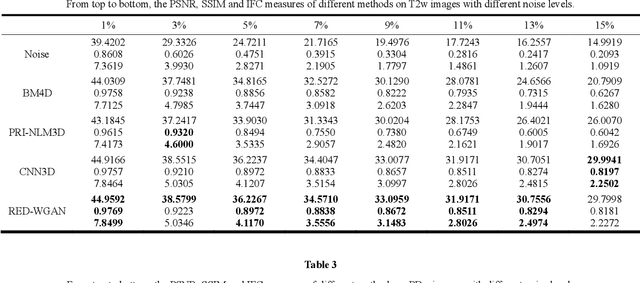
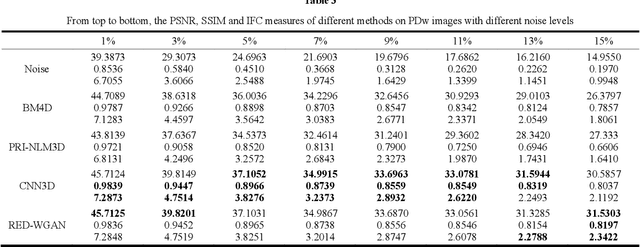
Abstract:Structure-preserved denoising of 3-D magnetic resonance images (MRI) is a critical step in the medical image analysis. Over the past years, many algorithms have been proposed with impressive performances. Inspired by the idea of deep learning, in this paper, we introduce a MRI denoising method based on the residual encoder-decoder Wasserstein generative adversarial network (RED-WGAN). Specifically, to explore the structure similarity among neighboring slices, 3-D configuration are utilized as the basic processing unit. Residual autoencoder, combined with deconvolution operations are introduced into the generator network. Furthermore, to alleviate the shortcoming of traditional mean-squared error (MSE) loss function for over-smoothing, the perceptual similarity, which is implemented by calculating the distances in the feature space extracted by a pre-trained VGG-19 network, is incorporated with MSE and adversarial losses to form the new loss function. Extensive experiments are studied to access the performance of the proposed method. The experimental results show that the proposed RED-WGAN achieves superior performance relative to several state-of-art methods in both simulated and clinical data. Especially, our method demonstrates powerful ability in both noise suppression and structure preservation.
 Add to Chrome
Add to Chrome Add to Firefox
Add to Firefox Add to Edge
Add to Edge